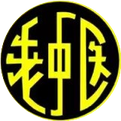Disease inquiry, health guidance, classic wellness, Traditional Chinese Medicine (TCM) and herbal medicine, seeking help when ill
Chuanxiong (Ligusticum chuanxiong Hort.) is the dried rhizome of the plant in the Apiaceae family. It is harvested in summer when the nodes on the stem are prominently protruding and slightly purplish. After removing the soil, it is sun-dried and then dried further, removing the fibrous roots.
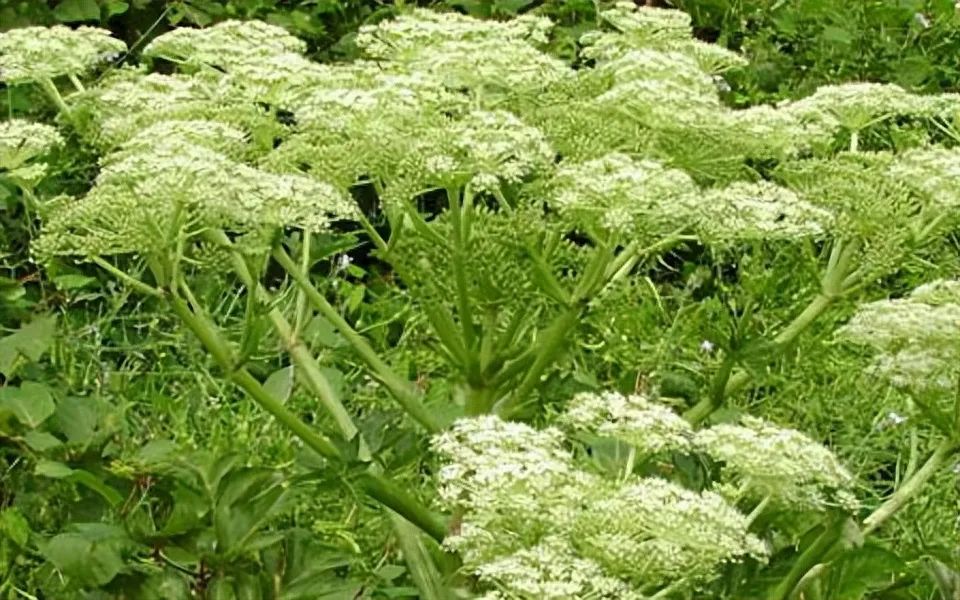
Chuanxiong plant
【Characteristics】 This product is an irregular, nodule-shaped lump, with a diameter of 2-7 cm. The surface is gray-brown or brown, rough and wrinkled, with many parallel raised nodes. The top has a depressed, round stem scar, and the underside and nodes have many small tuberous root scars. It is solid and not easily broken, with a cross-section that is yellow-white or gray-yellow, scattered with yellow-brown oil chambers, and the growth rings appear wavy. It has a strong aromatic smell, a bitter and spicy taste, with a slight numbing sensation on the tongue and a mild sweetness aftertaste.

Chuanxiong medicinal material
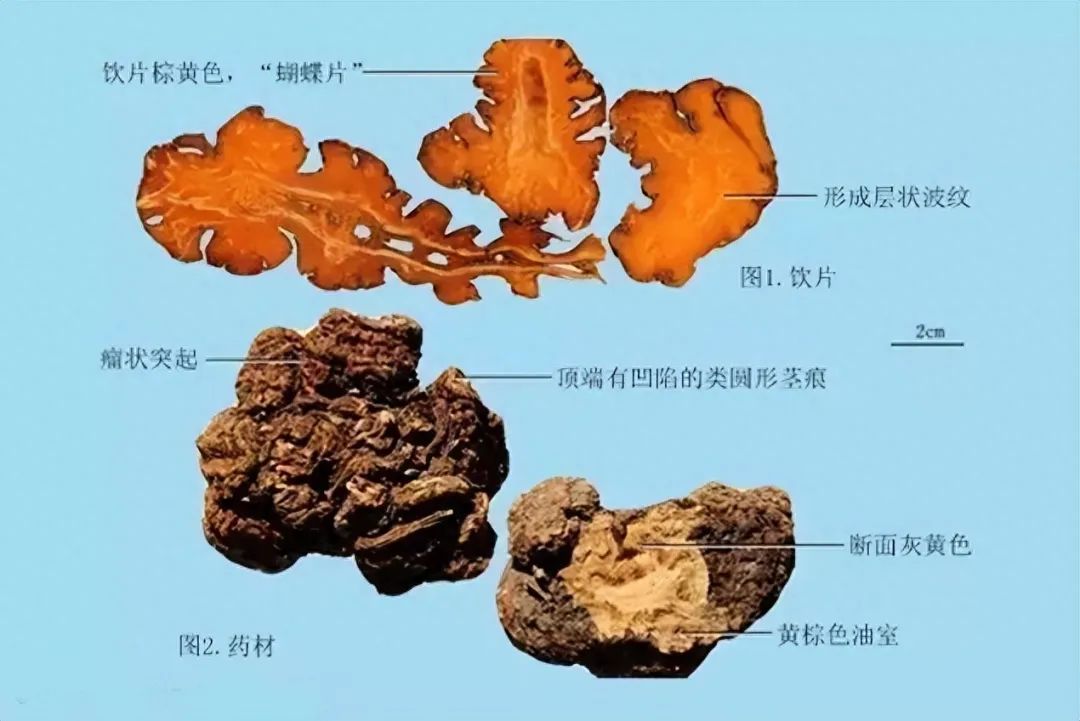
Chuanxiong identification
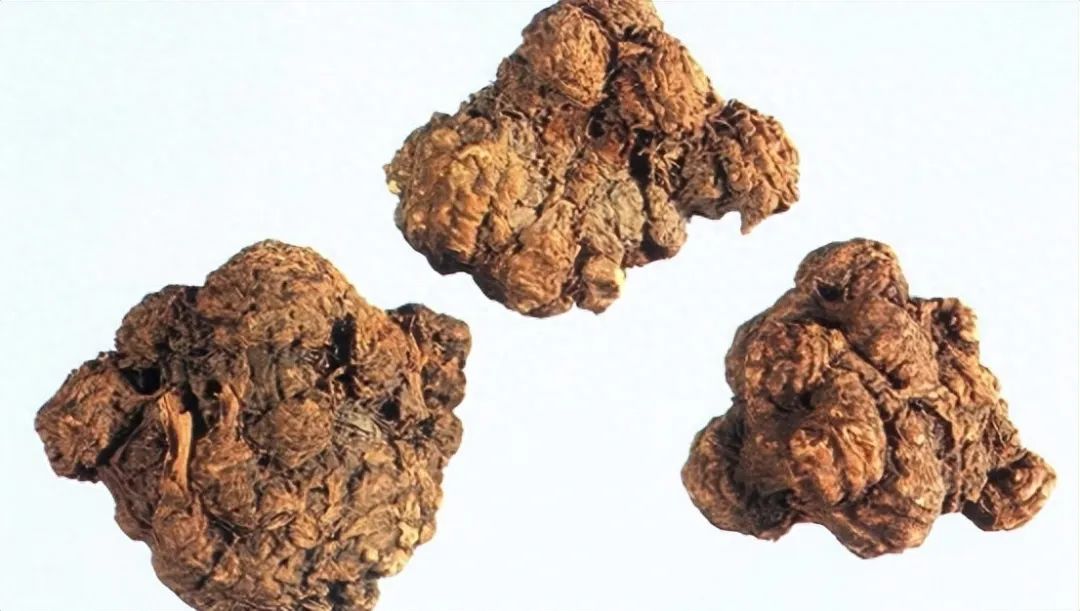
Chuanxiong adulterants: Gao Ben
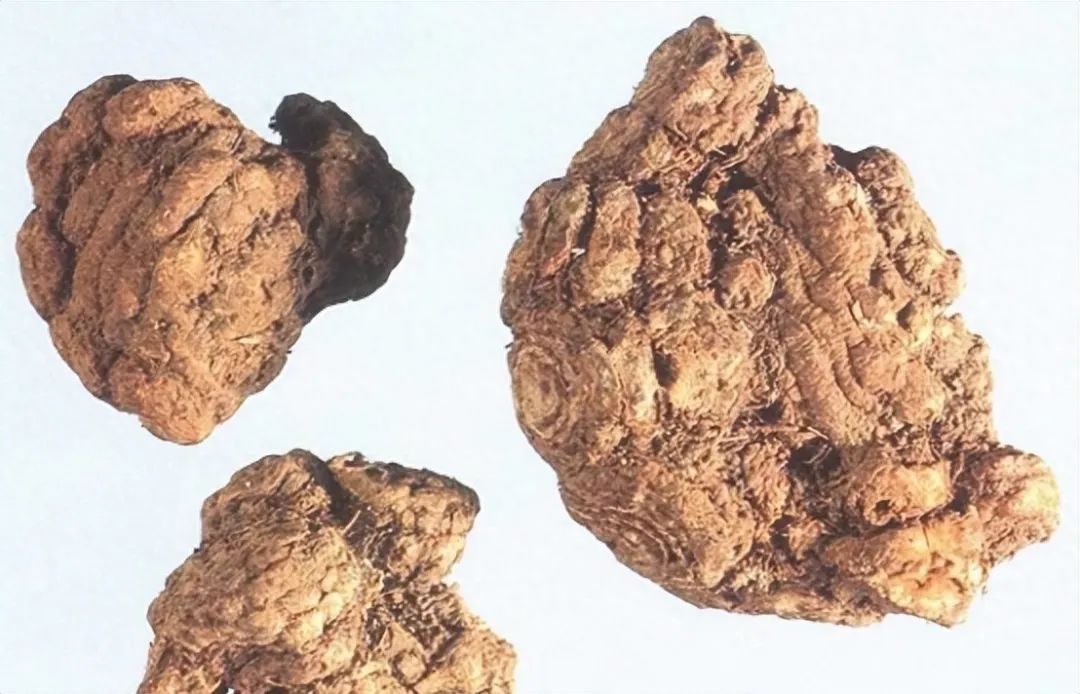
Chuanxiong confusables: Fu Xiong
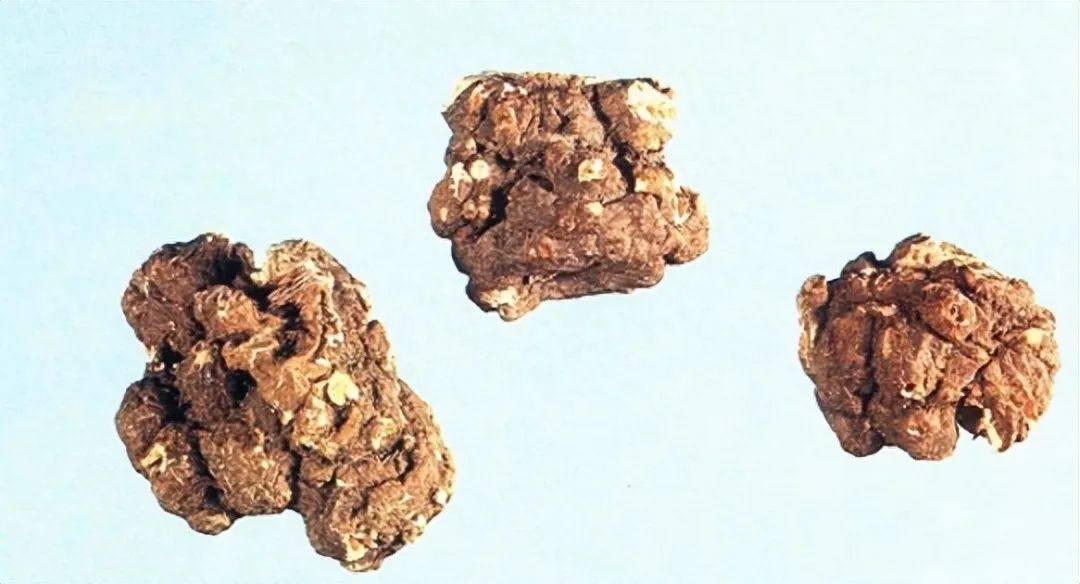
Chuanxiong confusables: Dong Chuanxiong
1. Shan Chuanxiong refers to the mother root of the cultivated Chuanxiong in Sichuan, which is softer and of slightly inferior quality but still medicinal. Ling Zhu refers to the overly small Chuanxiong, which cannot be used medicinally. 2. The cultivated variety of Ligusticum chuanxiong Hort. cv. Fuxiong from Jiangxi, Hunan, and Hubei provinces is also known as tea xiong. Its distinguishing features include: the leaf shape is broadly ovate-triangular, with three to four times pinnately divided, and the unlobed segments are relatively wide. The medicinal material’s distinguishing features include: the rhizome is nodule-shaped with many fibrous roots, the surface is gray-yellow to yellow-brown, with several tuberous protrusions, and the top has a raised round stem scar that is not depressed. Its efficacy is similar to that of Chuanxiong, but it is generally considered to be of slightly inferior quality.
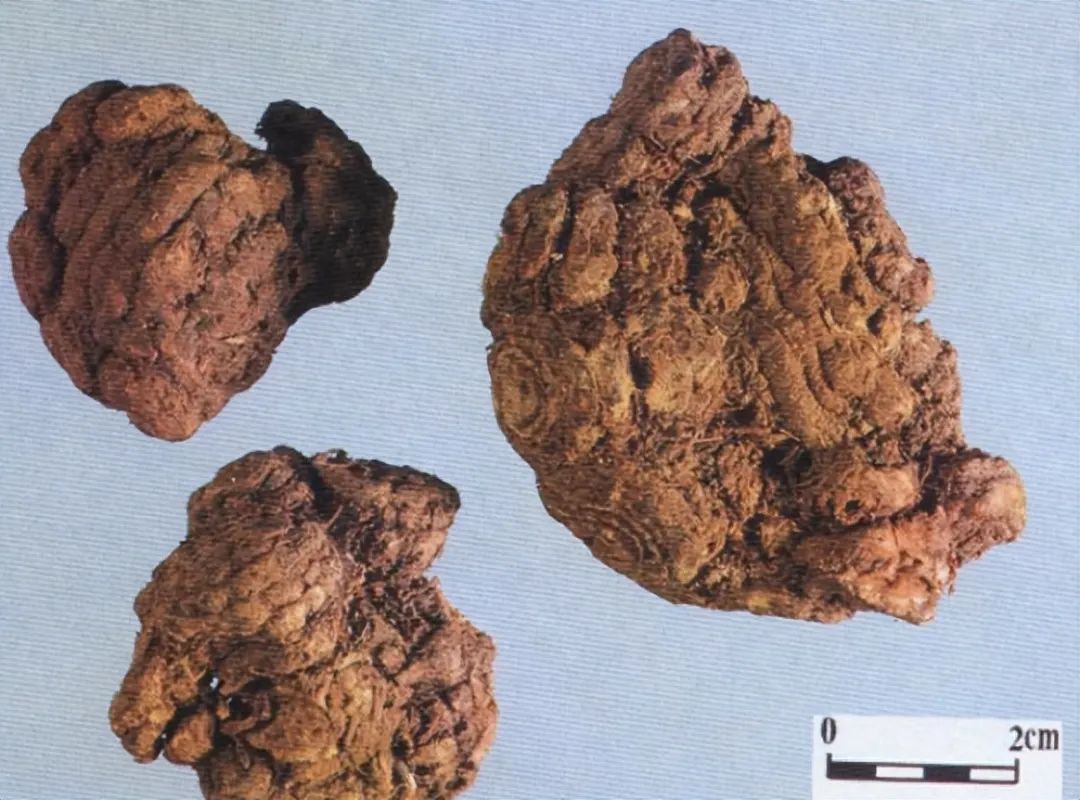
Fu Xiong
3. Dong Chuanxiong (Cnidium officinala Makino), introduced from Japan over 50 years ago in Yanbian Korean Autonomous Prefecture, is a traditional medicine of the Korean ethnic group. It has the effects of promoting blood circulation, relieving qi stagnation, and alleviating pain, used for headaches, rib pain due to qi stagnation, blood stagnation causing amenorrhea, and menstrual irregularities. Its distinguishing features include: the stem is thinner with few branches; the leaves are twice pinnately divided, with the terminal lobes being ovate-lanceolate; and the compound umbel flowers are terminal. The medicinal material’s distinguishing features include: the rhizome is irregularly lump-shaped, 3-10 cm long, 2-5 cm in diameter, dark brown, with a wrinkled, nodule-like ring on the surface, and a light brown cross-section. It has a distinctive aroma, a slightly bitter taste, and a numbing sensation on the tongue. This plant belongs to a different genus than Chuanxiong, and its chemical composition differs, making it unsuitable as a substitute for Chuanxiong.
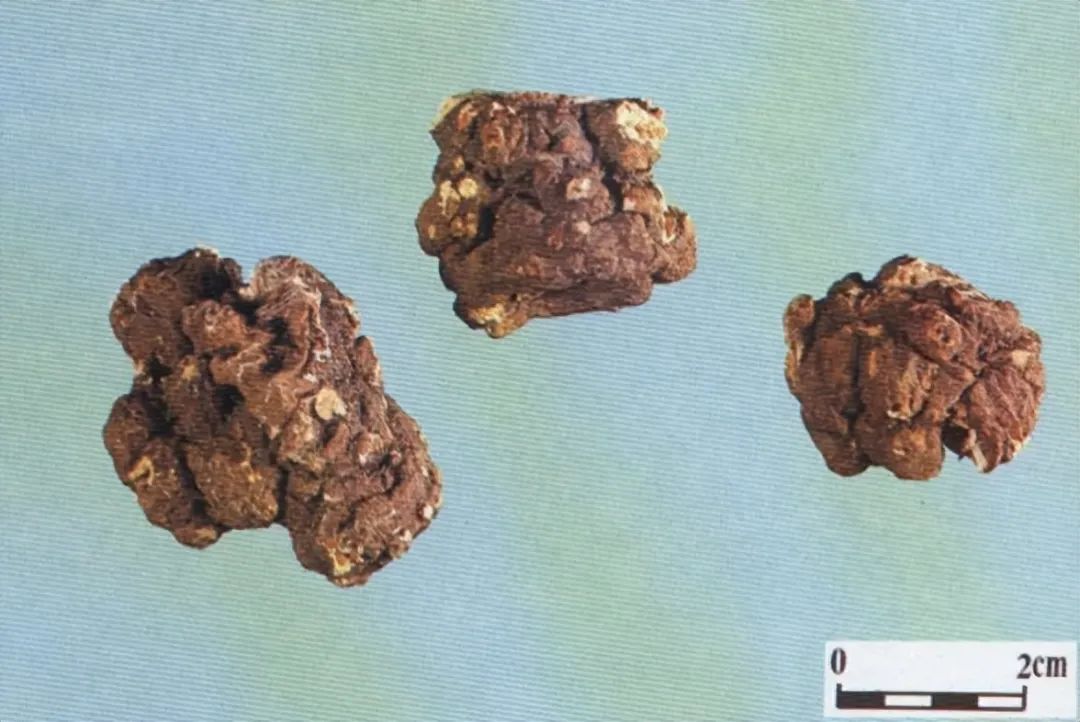
Dong Chuanxiong
4. Gao Ben (Ligusticum sinense Oliv.) is the dried rhizome of the plant in the Apiaceae family. This product is irregularly lump-shaped, with a gray-yellow-brown surface, wrinkled, with obvious stem scars and tuberous root scars. The surface has few residual fibrous roots and has a faint aromatic smell.
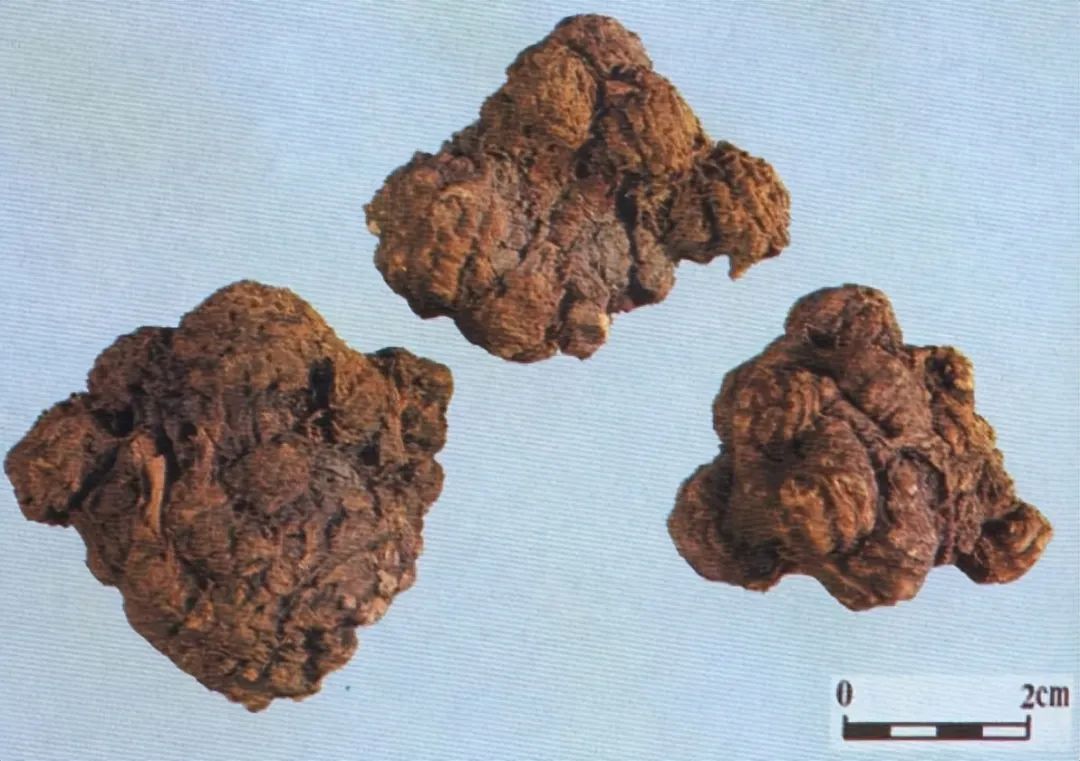
Gao Ben
【Processing】 Remove impurities, separate by size, wash thoroughly, soak, cut into thick slices, and dry.
【Characteristics】 This product is irregular thick slices, with a gray-brown or brown outer skin, and has wrinkled patterns. The cut surface is yellow-white or gray-yellow, with distinct wavy ring patterns or polygonal textures, scattered with yellow-brown oil spots. It is solid. It has a strong aromatic smell, a bitter and spicy taste, with a slight sweetness.
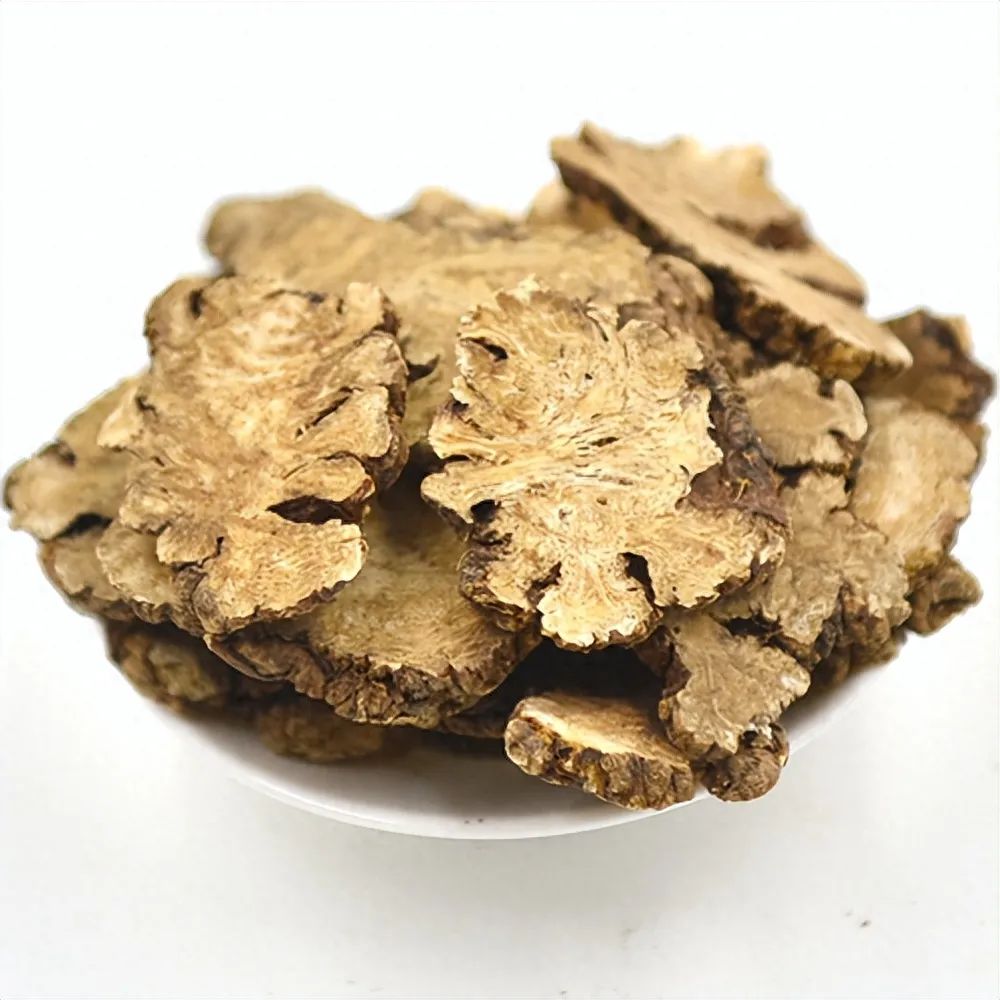
Chuanxiong slices
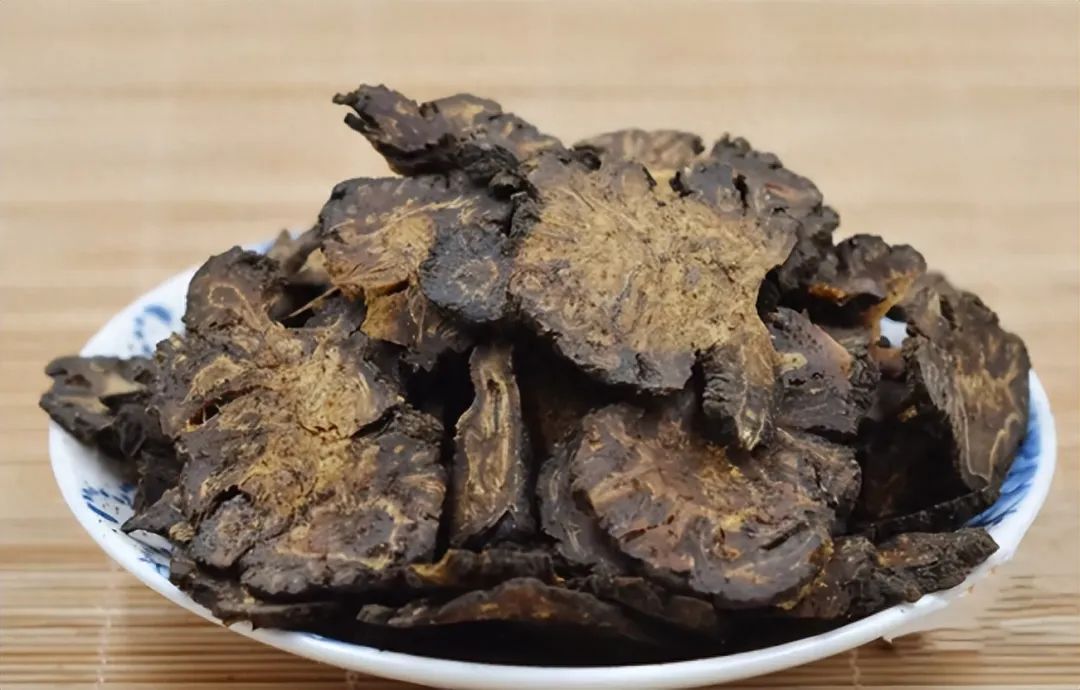
Wine Chuanxiong slices
【Chemical Composition】
1. Contains Chuanxiongzine (chuanxiongzine), which is tetramethylpyrazine, and other components such as perlolyrine, ligustilide, wallichilide, and various phthalides. The rhizome contains volatile oil at about 1%. A total of 40 components have been identified in the oil, accounting for 93.64%, with the main components being ligustilide (58%), 3-butylphthalide (5.29%), and sabinene (6.08%). The rhizome also contains nitrogen compounds, phenolic compounds, and various fatty acids.
2. The rhizome contains about 1% volatile oil. The identified components in the oil include ligustilide, 3-butylphthalide, and various other compounds. The nitrogen compounds include tetramethylpyrazine, perlolyrine, and others. The acidic or phenolic compounds include 4-hydroxy-3-methoxystyrene, and various acids. Additionally, the rhizome contains neutral oils and various esters.
【Pharmacological Effects】
1. Effects on the central nervous system: Chuanxiong has significant sedative effects. In small amounts, the volatile oil of Chuanxiong inhibits brain activity in animals, while stimulating the medullary respiratory center, vascular motor center, and spinal reflex center. Chuanxiong decoction administered to mice can inhibit spontaneous activity and prolong sleep induced by pentobarbital sodium, but it cannot counteract seizures induced by pentylene tetrazole.
2. Effects on the cardiovascular system: Chuanxiong decoction has been shown to increase the contraction amplitude and slightly slow the heart rate in isolated frog hearts at concentrations of 10-5 to 10-4.
3. Effects on smooth muscle: A 10% aqueous solution of Chuanxiong extract can stimulate the pregnant rabbit uterus in small amounts, increasing tension and enhancing contractions, but in large amounts, it can cause uterine paralysis and stop contractions. Alkaloids, ferulic acid, and ligustilide have antispasmodic effects, with ligustilide being the main component.
4. Antimicrobial effects: Chuanxiong has inhibitory effects on various bacteria, including Escherichia coli, Shigella, Pseudomonas aeruginosa, and Vibrio cholerae.
5. Radioprotective effects: Chuanxiong decoction has shown certain therapeutic effects in animal experiments for radiation sickness.
6. Other effects: Chuanxiongzine can increase renal blood flow in anesthetized rabbits and has diuretic effects. It can inhibit DNA synthesis, suggesting it may suppress protein and antibody production.
【Taste and Channels】 Spicy, warm. It enters the liver, gallbladder, and pericardium channels.
【Functions and Indications】 Activates blood circulation and promotes qi, dispels wind, and alleviates pain. Used for chest obstruction, heart pain, stabbing pain in the chest and ribs, swelling and pain from falls, menstrual irregularities, dysmenorrhea, abdominal pain from masses, headaches, and rheumatic pain.
【Dosage】 3-10 g.
【Storage】 Store in a cool, dry place, protected from pests.
Note: This article is for reference only; please follow medical advice for specific treatments and medications! This public account is for academic exchange only.
To learn more about TCM, herbal materials, herbal recipes, and folk remedies, ▼ click the card below ▼ to inquire!
For example: back pain, gynecology, andrology, kidney tonification, lumbar disc herniation, back pain, leg pain, knee pain, cervical spondylosis, liver disease, stomach disease, constipation, frequent urination, diarrhea, abdominal protrusion, dysmenorrhea, breast hyperplasia, postpartum care, acne, gray hair, hair loss, skin diseases, age spots, aging, yin deficiency, colds, coughs, fever, insomnia, stones, pharyngitis, sore throat, headaches, toothaches, snoring, oral ulcers, bad breath, rhinitis, tinnitus, eye diseases, thyroid issues, dandruff, athlete's foot, hemorrhoids, cold hands and feet, rheumatism, night sweats, cerebral hemorrhage, hypertension, diabetes, asthma, heart disease, cardiovascular diseases, fatty liver, gout, Alzheimer's disease, varicose veins, qi tonification, blood tonification, calcium supplementation, weakness, obesity, pediatric diseases, slimming legs, slimming waist, dampness, strengthening the spleen, hiccups, body odor, cramps, smoking cessation, meridians, Chinese patent medicines, foot baths... and more.
Thank you for sharing and clicking "Looking" for continuous good luck.

